Some of the best running partners are right in front you: dogs. But different breeds are better suited to the sport than others. While some dog breeds want little more than to lounge around the house with a little time in the backyard, others long for something more.
In fact, some breeds crave that kind of strenuous exercise running provides.
And for some, it even offers a new lease on life.
In 2012, Compassion and Responsibility for Animals, a non-profit group based in the Philippines, rescued over 200 pit bulls who’d spent much of their lives chained outside and forced to take part in an illegal dog-fighting ring.
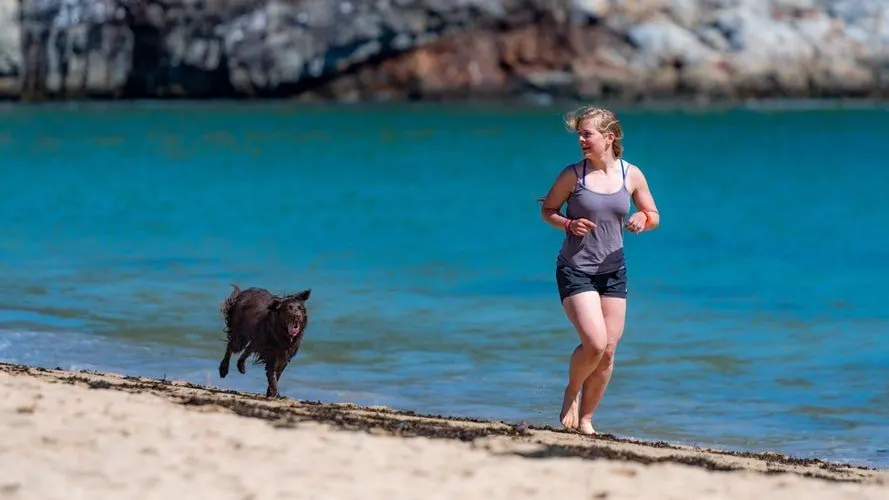
Their story didn’t end there. Many pit bulls, especially any involved with a fighting past, either linger in shelters or even are euthanized.
Instead, these dogs were taken to the Laguna Pit Bulls Sanctuary (located in the Philippines) where not only have they been rehabilitated but–you guessed it–they get plenty of exercise and bonding time through running with volunteers.
Running for them isn’t a chore–in fact, according to a sanctuary representative, breeds like pit bulls crave constant exercise.
Contents
Best Breeds: Our Criteria
For our list, though, we’ll be looking at dog breeds that not only are great running partners, but also fit into your life. We’ve considered a number of factors, including:
Temperament
- Endurance and Predisposition for Strenuous Exercise
Longevity
- Breed Disposition for Certain Health Issues
Grooming, Shedding, and Allergies
For the purposes of this review, we will be focusing on pure-bred dogs, though mixes of certain breeds may also have similar traits.
Regardless of what breed catches your eye, make sure that dog is someone you could see yourself running with–and a dog that fits your lifestyle, which includes time and attention you can commit. Every dog deserves a good home.
And while you’re searching for your new running buddy, make sure you take the appropriate steps so you’re ready when it’s time to bring them home.
10. Vizsla
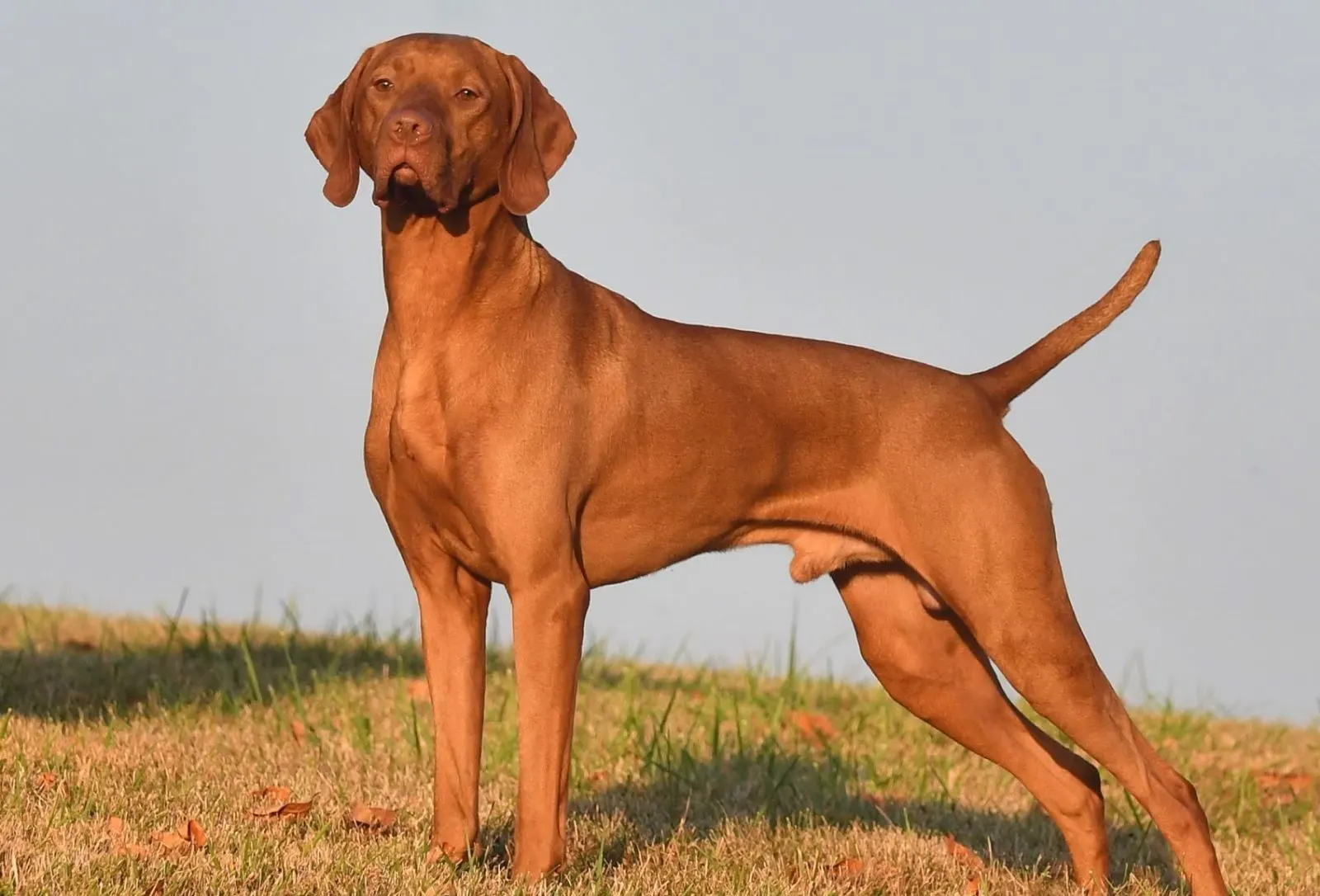
Vizslas come in at out number best dog breed for runners. The only reason this breed isn’t even higher on this list is simply that they tend to be a little rarer than other breeds.
That doesn’t make them any less of a great breed for runners; you just might have to go out of your way to adopt one.
Classified as a sporting dog, this breed is described as affectionate and gentle. They are considered natural athletes, not only in running but in other sports–living up to their classification as a sporting breed.
They are prized also for their endurance, so they may very well be up to a longer run.
Since this is a fairly large breed, even with long runs, at its energy level, it does best in a home with a yard to run around in. It’s a moderate shedder and requires moderate grooming.
- Group: Sporting
- Coloring: Golden-Rust
- Weight: 44–55 lbs (female); 55-60 lbs (male)
- Height: 21-24 inches
- Temperament: Gentle, Affectionate, Intelligent, Curious
- Life Expectancy: 12-14 years
- Exercise: Needs 30 minutes min/ day
- Moderate Shedding
9. Siberian Husky
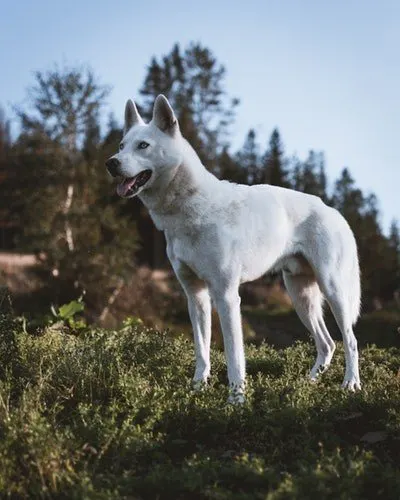
If you’re already a dog lover, chances are you’re not surprised that Siberian Huskies love to run. Even if you only happened to see movies like Iron Will, you know that this breed has been prized for its endurance and discipline for intense dog sledding races–often under the most brutal conditions.
If you’re looking for a dog who can run with you for long distances, or in more (cold) extreme weather, this breed is your best bet. There’s a chance a huskie will even outlast you!
The iconic white or white and black coat sheds, but is actually fairly low maintenance: Huskies shed an undercoat once a year.
This is not a dog that does well with being left alone, or sedentary for long, but it can adapt to more urban settings. Unlike other huskies, they tend to be friendly and less of a watchdog.
- Group: Working
- Coloring: Gray, White, Black; eyes can be brown or blue
- Weight: 35-50 lbs (female); 45-60 lbs (male)
- Height: 20-23.5 inches
- Temperament: Very social, Loyal, Mischievous
- Life Expectancy: 12-14 years
- Exercise: Adaptable, but needs a substantial and consistent amount
- Shedding: Light to Moderate
8. Border Collie
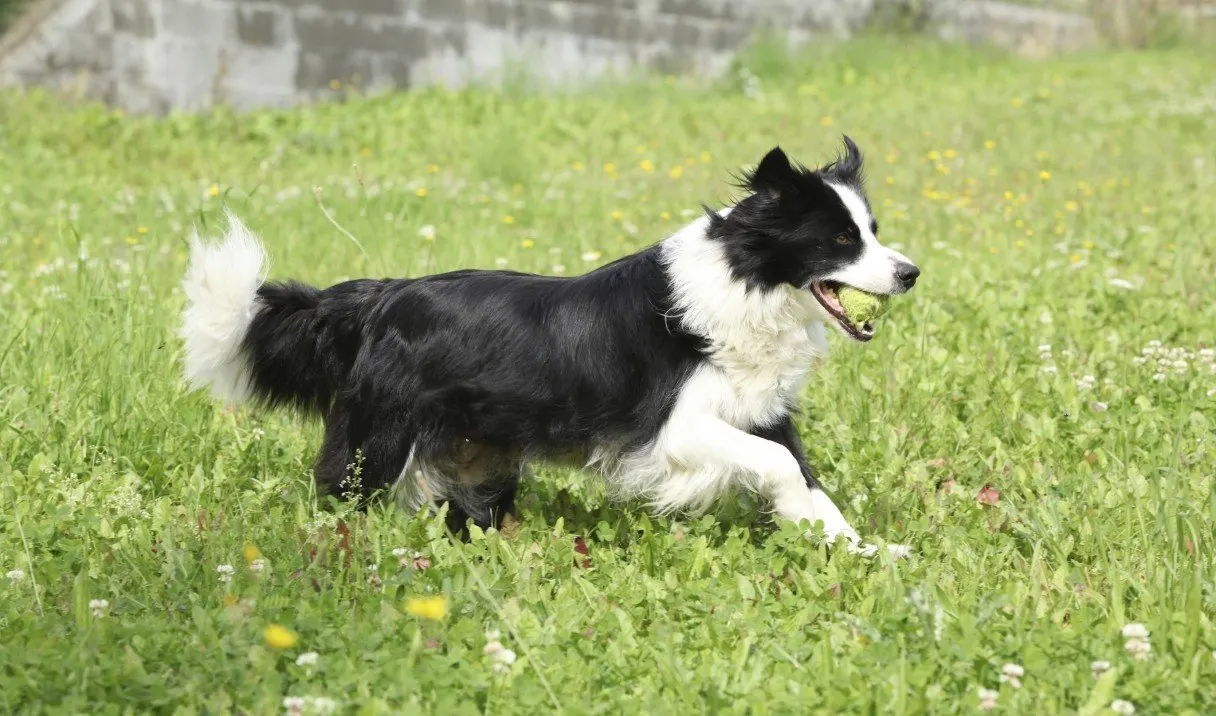
Border Collies have enjoyed their time in the spotlight, perhaps most notably in children’s films like Babe and Mist: The Tale of a Sheepdog Puppy. Known for their natural herding instincts, border collies are determined, intelligent, and highly trainable.
Their unbound energy and natural work ethic makes them a natural choice for runners. A word of caution: their natural breeding instincts may lead them to be a little more tend to nip than other breeds, so it’s best to get that in check as a puppy. Nonetheless, these spirited dogs not only will go with you for a run, but also cuddle with you after you’re both tired.
- Group: Herding
- Coloring: Multi Colors including chocolate, brown, white, black, and red
- Weight: 30-55 lbs
- Height: 18-22 inches
- Temperament: Highly Intelligent, Workaholic
- Life Expectancy: 12-15 years
- Exercise: Vigorous daily exercise and/or work; plenty of space to roam
- Shedding: Moderate; dense coats require brushing twice a week
7. German Shepherd
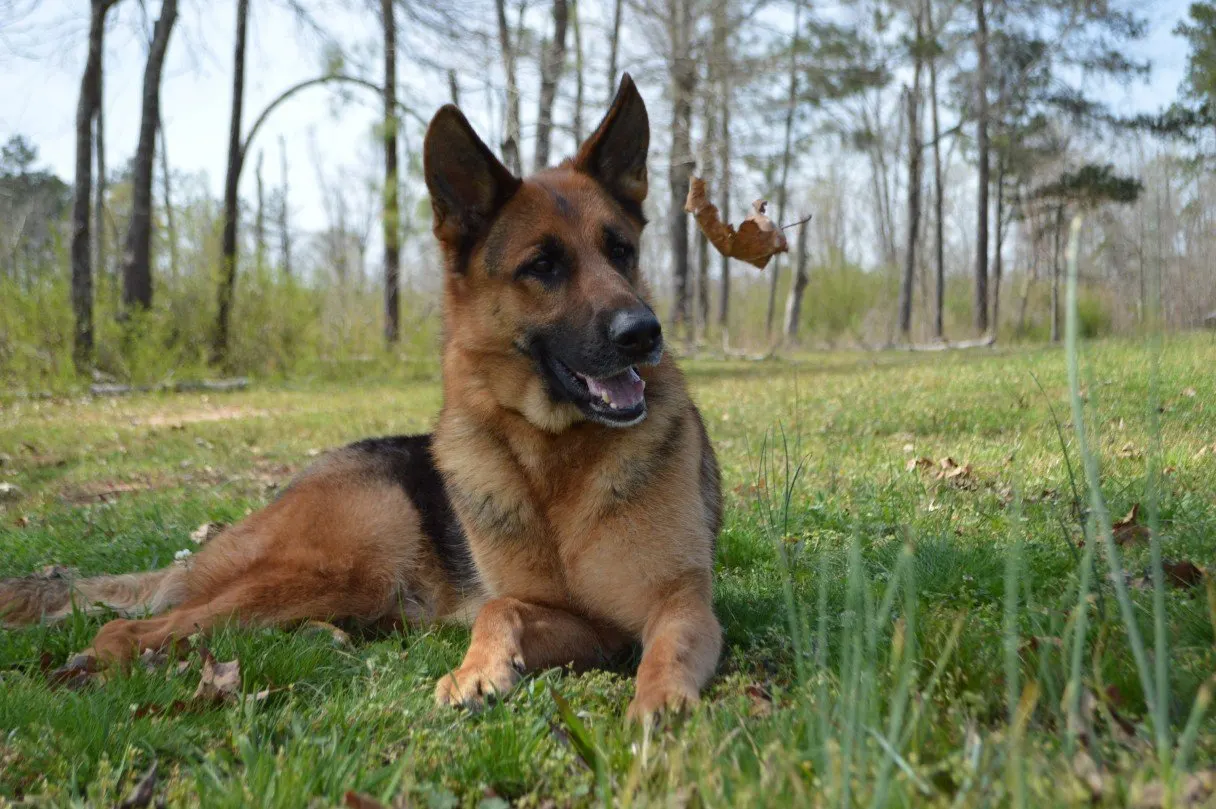
Agile and brave, German Shepherds are a perfect match for strenuous work like bomb sniffing, and working with the police to track suspects.
This powerful breed is best for a runner who wants a dog to go on very long runs. It’s also not a bad dog to protect you if you’re hitting some moren remote trails.
At its best, this breed is considered loyal, confident and steady which makes it a great endurance running breed.
That said, this isn’t the typical dog you might have in mind when you’re looking, especially if you have a family.
While it can be trained well, the breed is less prone to unbound affection and tends to be loyal to a master.
This is a great pick for a runner who goes out alone a lot and wants not only the company but someone to keep them safe.
- Group: Herding
- Coloring: Typically Black with tan, red, or gray
- Weight: 50-70 lbs (female); 65-90 lbs (male)
- Height: 22-26 inches
- Temperament: Steady, Confident, Loyal
- Life Expectancy: 7-10 years
- Exercise: Consistent; Other activities such as tracking and agility recommended
- Shedding: Heavy Shedding; consistent grooming needed
6. Australian Shepherd
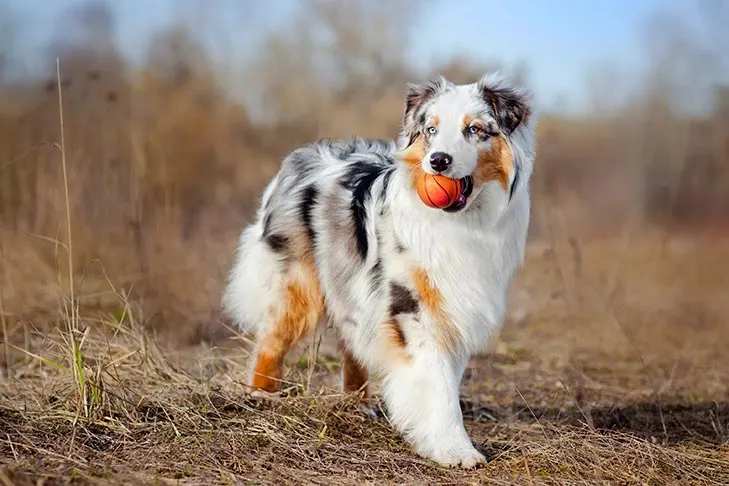
Beautiful blue eyes and a silky coat may entice some would-be-adopters, but it’s’ this breeds’ temperament and durability that lands it on the list of best running breeds for running.
It’s one of the most popular dog breeds in the United States, and with it’s worth ethic, enthusiasm, and intelligence, it’s easy to see why. Lean and agile, these dogs are a great pick if you prefer off the road or trail running.
While they normally require only moderate grooming, they become high shedders at certain times of the year; owners will need a grooming rake for maintenance every two to three days. Finally, these dogs are happiest on places with lots of space to roam, such as ranches or farms, but can adapt to other settings.
- Group: Herding
- Coloring: Varied;
- Weight: 40-55 lbs (female); 50-65 lbs (male)
- Height: 18-23 inches
- Temperament: Intelligent, Enthusiastic, Hard Workers
- Life Expectancy: 12-15 years
- Exercise: Moderate to heavy; space to roam; work as well as play
- Shedding: Moderate to Heavy
5. English Setter
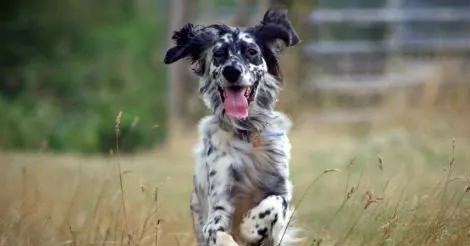
While many of the dog breeds on our list are prized for their energy, English Setters channel some of that energy into a fun-loving personality to match their whimsical, spotted coat. With a sweet disposition, this breed is also a wonderful balance of work ethic and sociability. Plus, it doesn’t have the herding instincts of German Shepherds and Border Collies, making it more suitable to family life, and living in suburban areas.
They’re still a fairly large breed, and they do shed, so expect regular grooming care. They do best with moderate, but consistent, distance runs.
- Group: Sporting
- Coloring: Spotted/ Freckled; White, lemon, orange, liver
- Weight: 45-55 lbs (female); 65-80 lbs (male)
- Height: 23-27 inches
- Temperament: Patient, Joyful, Sociable
- Life Expectancy: 12 years
- Exercise: Daily vigorous run encouraged
- Shedding: Heavier; Requires regular brushing
4. Standard Poodle
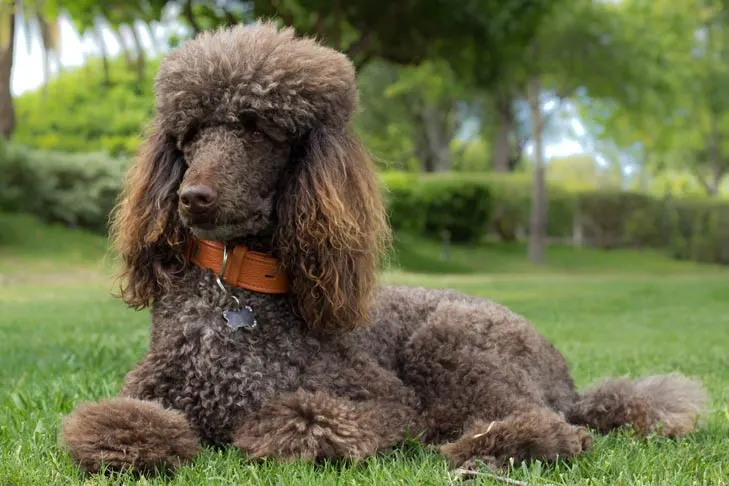
Coming in at number four on our list of best dog breeds for running is the poodle. For many, this might seem like an unconventional pick, but if you can get past the image of a meticulously groomed show dog, you’ll see there’s a lot this breed has to offer as a running companion.
Known as always active, highly intelligent, and confident dogs, poodles have both the initiative and the courage to try new running paths. Their ability to be trained is always a plus when you’re hitting a route with unknowns. Take these dogs of medium to shorter distance runs.
While we’re reviewing standard poodles, miniature poodles, which are closely related, could be running dogs for younger children and light distances. They’re also the best choice on our list for allergy-prone individuals, as they have very light shedding and don’t tend to have the mustiness associated with some other dogs.
- Group: Non-Sporting
- Coloring: Apricot, Gray, White, Black
- Weight: 40-50 lbs (female); 60-70 lbs (male)
- Height: 15 inches and over
- Temperament: Intelligent, Trainable, “Proud”
- Life Expectancy: 10-18 years
- Exercise: Moderate
- Shedding: Light
3. Airedale Terrier:
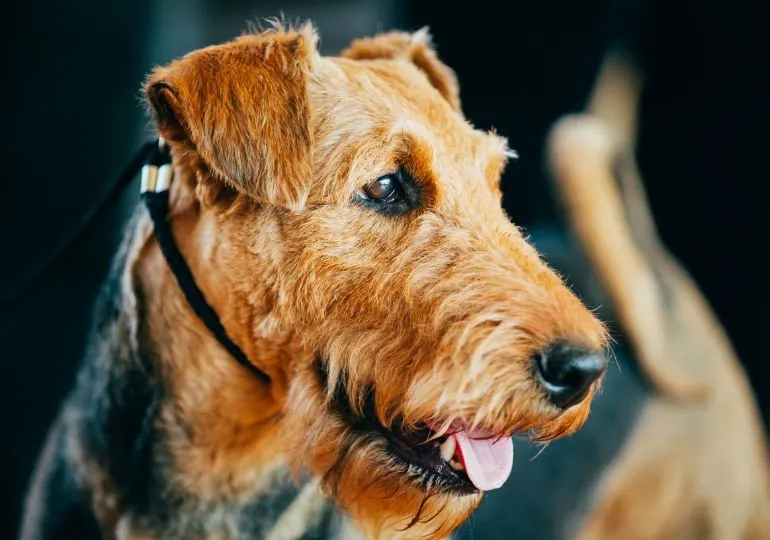
Airedale Terriers are, if nothing else, extremely energetic. In this, they live up to their terrier name. Considered exceptionally clever and brave, they also get a lot of joy out of new adventures–so if you like to mix things up with your running, both route and weather wise, you and an Airedale might be a natural match.
Known as “The King of Terriers” they are also highly adaptable, and have been used for athletic competitions and even hunting. Like many terriers, they are highly alert to intruders but are also patient with younger children.
They may not, however, be the best dog to run with children, as their mere strength, and independent mind can lead them to a different path.
- Group: Terrier
- Coloring: Black and Tan
- Weight: 50-70 lbs
- Height: average is 23 inches
- Temperament: Brave, Clever, Sociable
- Life Expectancy: 12-14 years
- Exercise: Moderate, but consistent
- Shedding: Moderate; weekly brushing
2. Dalmatian:
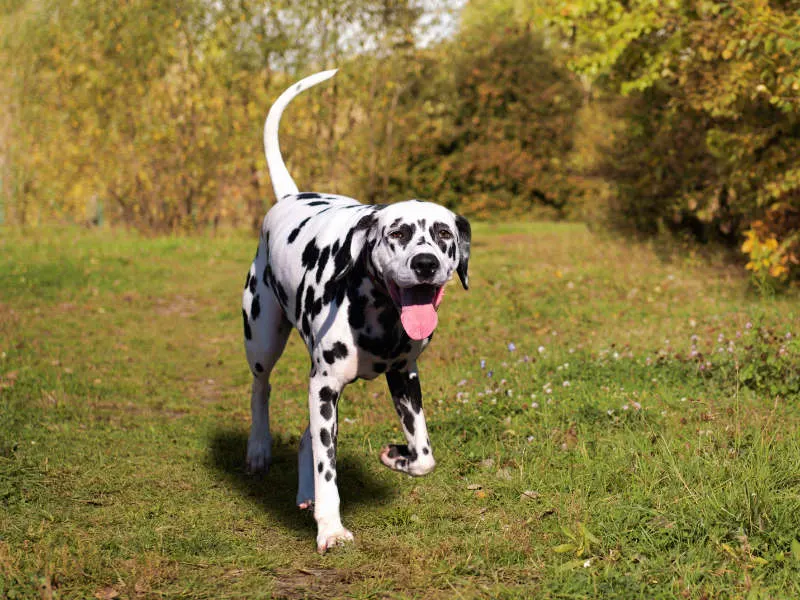
Few dog breeds have captured the imagination of Americans like this spotted wonder. Dalmatians are easily one of the most recognizable breeds and actually, have a history of working as “coach dogs”.
From working alongside firefighters to even being used in war, dalmatians are intelligent, loyal, energetic, and capable. They love long distances, though they do better on soft trails due to their tendency to ‘pound’ when they run, according to Runner’s World.
They’re watchdogs, so they’re also a great dog for single runners to keep safe, but not as good for anything like a group run. They make number two on our list admittedly due to some to their popularity, but you’ll also need to be cautious about purebred dalmatians’ health, as up to 5 percent have hip issues. Otherwise, they are generally healthy dogs.
- Group: Non-Sporting
- Coloring: Spotted; White with black or liver
- Weight: 45-70 lbs
- Height: 19-24 inches
- Temperament: Loyal, Intelligent, Dutiful
- Life Expectancy: 11-13 years
- Exercise: Regular Exercise
- Shedding: Heavy
1. Tie: Golden Retriever and Labrador Retriever:
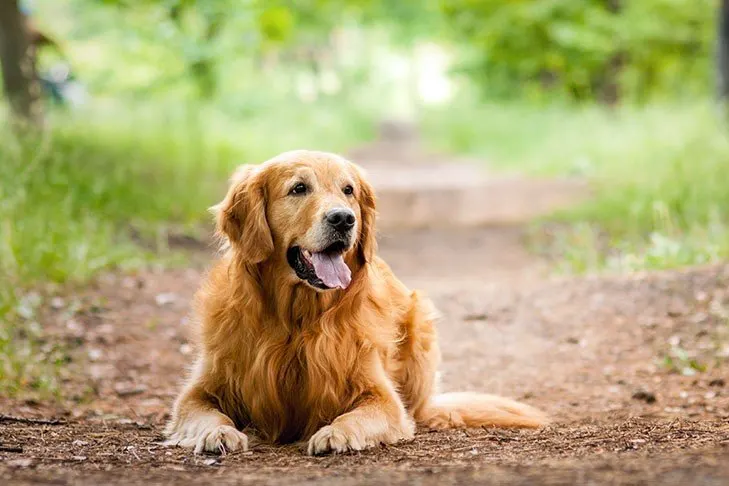
Retrievers are excellent dogs for sporting events in general, and their natural athleticism, extroversion, and fun-loving nature make them among the best dog breeds for runners.
While they enjoy space to roam, they’re also adaptable to a variety of both living environments and situations. They can be happy with a single master or in a family and can travel to camping trips, hikes, and things beyond your daily run.
Both breeds are cherished for being outwardly friendly and active. Golden Retrievers are known as more intelligent of the two, while Labradors are exceptionally active. Labs are known as all around great family dogs, while Golden Retrievers have been used in specialties such as seeing-eye dogs.
If you or someone you know has a special medical condition or want a gentle dog, go for a Golden Retriever. Labs are all around good bets, suited for short or mid distances.
- Group: Sporting (both)
- Coloring: Golden; Black, Yellow or Chocolate
- Weight: 55-80 lbs (both)
- Height: 21-24 inches (both)
- Temperament: See above; a mix of sociability, energetic, and intelligent
- Life Expectancy: 10-12 years (both)
- Exercise: Both need high level, daily exercise
- Shedding: Moderate for labs; Seasonal for Golden Retrievers
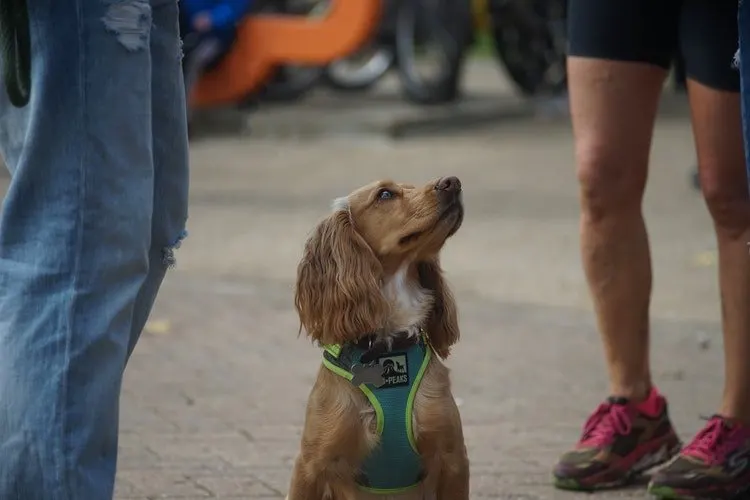
Some Final Considerations Before You Adopt:
No matter what dog breed you decide is best for you and your running regime, you need to know a few basics when it comes to running with your sidekick.
Be on the lookout for health conditions, especially Hip Dysplasia: The first signs of a hip problem include decreased activity or range of motion; swaying gait, or lameness. Any of these signs should be taken seriously and the dog should be evaluated immediately. Some breeds (including a few on this list) are more prone. In general, larger breeds are more prone, although it’s possible for smaller breeds to develop the condition. Improper nutrition, as well as too little–or too much exercise are risk factors.
Know how much running is appropriate:
That leads us to our next point. While we’ve named some of the best dog breeds for running, that doesn’t mean they’re all up for a marathon. How do you know? Follow these basic steps:
Don’t go for a full run with a puppy. They’re still developing, and intermittent play is more what they need.
Work up slowly. Just like you would with a human, dogs do best as runners when they progress a little at a time. Mix minutes of walking with jogging as you work your way up.
Know a reasonable limit:
while many breeds can run up to 20 to 30 miles a week, many also cannot. Don’t exceed this limit, and make sure your dog seems to be still eager and adapting well to runs
Take rest days. Just like you need rest days, your dog does too–even more so.
Adapt, Monitor and Change. Check with a vet for expert advice and make sure your dog and you are pleased with your routine.
Finally, and above all else–have fun and take care of you and your dog! A long-running relationship is dependent on listening to both of your needs and enjoying each other’s company.
Further read:
- Spartan Race vs Tough Mudder Compared – Which Obstacle Race is Better? - January 22, 2022
- Brooks Addiction Walker vs New Balance 928: Which is Best? - December 7, 2021
- Brooks Ravenna vs Adrenaline – Which is Best for You? - December 4, 2021
